On-Line Partial Discharge Monitoring System for Switchgears Based on the Detection of UHF Signals
Abstract
1. Introduction
2. System Design and Detection Principle
2.1. System Design Scheme
2.2. Theory of Detection Technology
3. Hardware Circuit Design Scheme
3.1. UHF Sensor
- Operational frequency: 300–800 MHz and 960–1650 MHz;
- Bandstop rejection: 20 dB (800–960 MHz);
- Antenna size: 20 × 50 mm (without connector);
- Antenna connector: SMA-K (standard female connector, external screw, and internal hole).
3.2. Detection Circuit Design
3.3. Data Collector Design
4. Program Design of Online Monitoring System
4.1. Communication Program Design
4.2. Upper Computer Software Design
5. Experimental Results
- (1)
- Start each device, start data collector, and supply power to both ends of the discharge model;
- (2)
- Use the high voltage regulator to slowly increase the supply voltage;
- (3)
- Record the data monitored by the computer web page.
6. Conclusions
Author Contributions
Funding
Institutional Review Board Statement
Informed Consent Statement
Data Availability Statement
Conflicts of Interest
References
- Wu, Y.; Ding, D.; Wang, Y.; Zhou, C.; Lu, H.; Zhang, X. Defect recognition and condition assessment of epoxy insulators in gas insulated switchgear based on multi-information fusion. Measurement 2022, 190, 110701. [Google Scholar] [CrossRef]
- Khan, Q.; Refaat, S.S.; Abu-Rub, H.; Toliyat, H.A. Partial discharge detection and diagnosis in gas insulated switchgear: State of the art. IEEE Electr. Insul. Mag. 2019, 35, 16–33. [Google Scholar] [CrossRef]
- Paoletti, G.J.; Golubev, A. Partial discharge theory and technologies related to medium-voltage electrical equipment. IEEE Trans. Ind. Appl. 2001, 37, 90–103. [Google Scholar] [CrossRef]
- Shafiq, M.; Hussain, G.A.; Kütt, L.; Elkalashy, N.I.; Lehtonen, M. Partial discharge diagnostic system for smart distribution networks using directionally calibrated induction sensors. Electr. Power Syst. Res. 2015, 119, 447–461. [Google Scholar] [CrossRef]
- Zou, Y.; Wu, Z.; Gui, J.; Jiang, X.N. Signal Detection and Pattern Recognition of Switchgear Partial Discharge. In Proceedings of the 2017 2nd Internatioanl Seminar on Applied Pyhsics, Optoelectronics and Photonics (APOP 2017), Shanghai, China, 30–31 December 2017; pp. 301–307. [Google Scholar]
- Song, J.; Zhang, J.; Fan, X. Device for online monitoring of insulation faults in high-voltage switchgears. Int. J. Distrib. Sens. Netw. 2021, 17, 1550147721999284. [Google Scholar] [CrossRef]
- Yan, Y.; Ren, S.; Lu, Y.; Yang, S.; Zhao, K.; Li, H. Efficient and Low-Cost PD Monitoring and Locating System for MV Switchgears Using TEV Detectors. IEEE Trans. Power Deliv. 2021, 36, 3266–3269. [Google Scholar] [CrossRef]
- Li, X.; Liu, W.; Xu, Y.; Ding, D. Discharge characteristics and detectability of metal particles on the spacer surface in gas-insulated switchgears. IEEE Trans. Power Deliv. 2021, 37, 187–196. [Google Scholar] [CrossRef]
- Lu, S.; Chai, H.; Sahoo, A.; Phung, B.T. Condition monitoring based on partial discharge diagnostics using machine learning methods: A comprehensive state-of-the-art review. IEEE Trans. Dielectr. Electr. Insul. 2020, 27, 1861–1888. [Google Scholar] [CrossRef]
- Suo, C.; Deng, X.; Tan, X.; Wang, K.; Zhao, L.; Li, T. Linearity test method for non-contact ultrasonic and transient earth voltage PD detector. Ferroelectrics 2017, 521, 44–52. [Google Scholar] [CrossRef]
- Yadam, Y.R.; Ramanujam, S.; Arunachalam, K. An ultrawideband conical monopole with radome for detection of partial discharges. IEEE Sens. J. 2021, 21, 18764–18772. [Google Scholar] [CrossRef]
- Darwish, A.; Refaat, S.S.; Toliyat, H.A.; Abu-Rub, H. On the electromagnetic wave behavior due to partial discharge in gas insulated switchgears: State-of-art review. IEEE Access 2019, 7, 75822–75836. [Google Scholar] [CrossRef]
- Wang, Y.; Guan, J.; Geng, Y.; Feng, C. A miniaturised LS Peano fractal antenna for partial discharge detection in gas insulated switchgear. Sens. Transducers 2020, 240, 19–25. [Google Scholar]
- Dai, D.; Wang, X.; Long, J.; Tian, M.; Zhu, G.; Zhang, J. Feature extraction of GIS partial discharge signal based on S-transform and singular value decomposition. IET Sci. Meas. Technol. 2017, 11, 186–193. [Google Scholar] [CrossRef]
- Hu, J.; Liu, W.; Zhang, H.; Liu, H.; Xu, K.N.; Wang, M.M. Arrival Time Difference Estimation of Ultrasonic Signals from Partial Discharge in Electric Power Equipments. J. Electr. Electron. Eng. 2019, 7, 113–119. [Google Scholar] [CrossRef][Green Version]
- Lian, W.; Zhao, T. Design of Insulation Online Monitoring and Anti-Condensation Control System for Distribution Switchgear. Acad. J. Eng. Technol. Sci. 2021, 4, 45–51. [Google Scholar]
- Uwiringiyimana, J.P.; Khayam, U.; Montanari, G.C. Design and Implementation of Ultra-Wide Band Antenna for Partial Discharge Detection in High Voltage Power Equipment. IEEE Access 2022, 10, 10983–10994. [Google Scholar] [CrossRef]
- Li, Z.; Qu, N.; Li, X.; Zuo, J.; Yin, Y. Partial discharge detection of insulated conductors based on CNN-LSTM of attention mechanisms. J. Power Electron. 2021, 21, 1030–1040. [Google Scholar] [CrossRef]
- Jongsataporn, T.; Chivapreecha, S. The matrix-based design and realization of digital parametric equalizer. AEU-Int. J. Electron. Commun. 2021, 134, 153651. [Google Scholar] [CrossRef]
- Ruirong, D.; Gan, L. Design of real-time monitoring system for electric submersible pump based on stm32. In Proceedings of the 2021 3rd International Conference on Intelligent Control, Measurement and Signal Processing and Intelligent Oil Field (ICMSP), Xi’an, China, 23–25 July 2021; pp. 326–329. [Google Scholar]

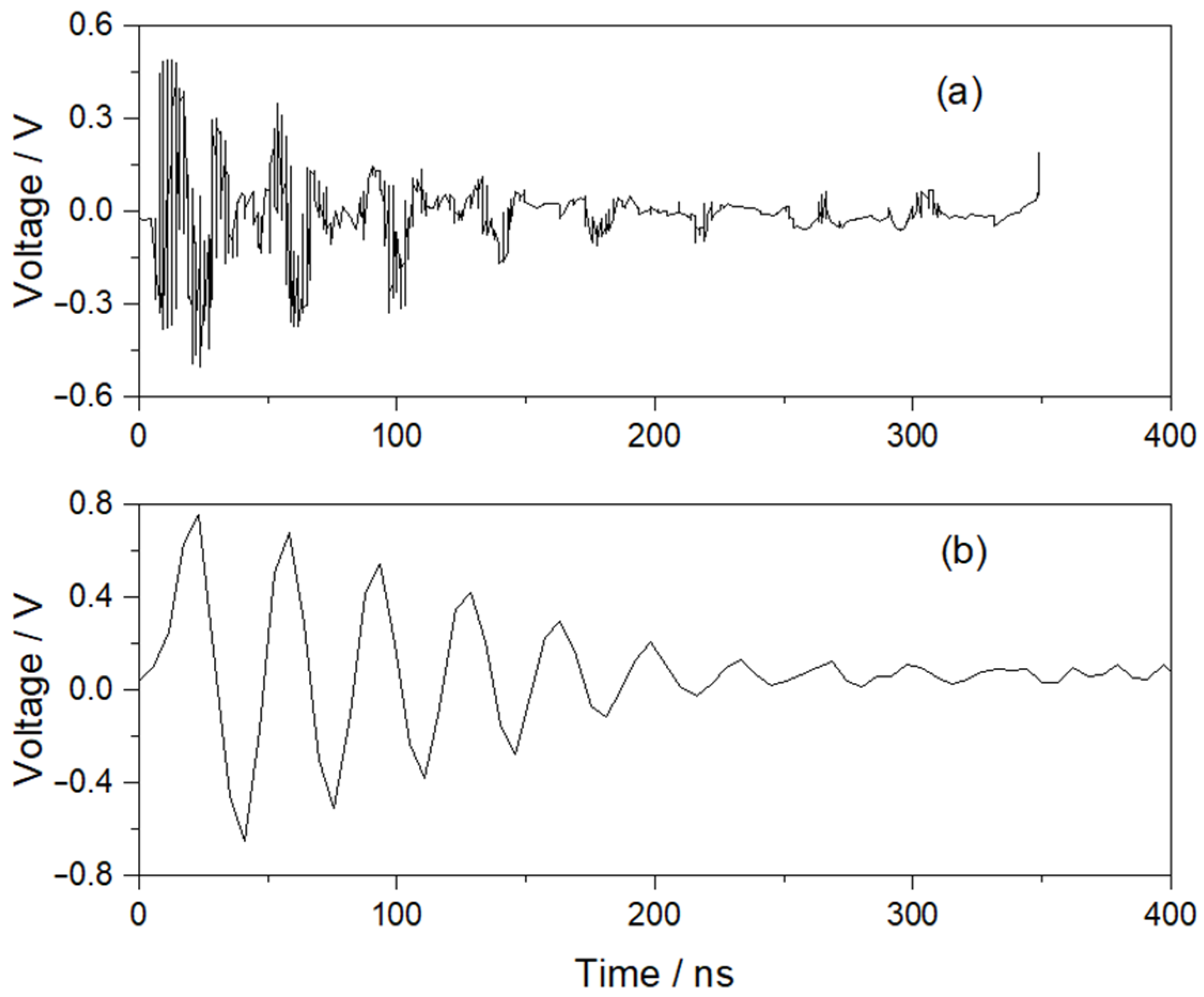
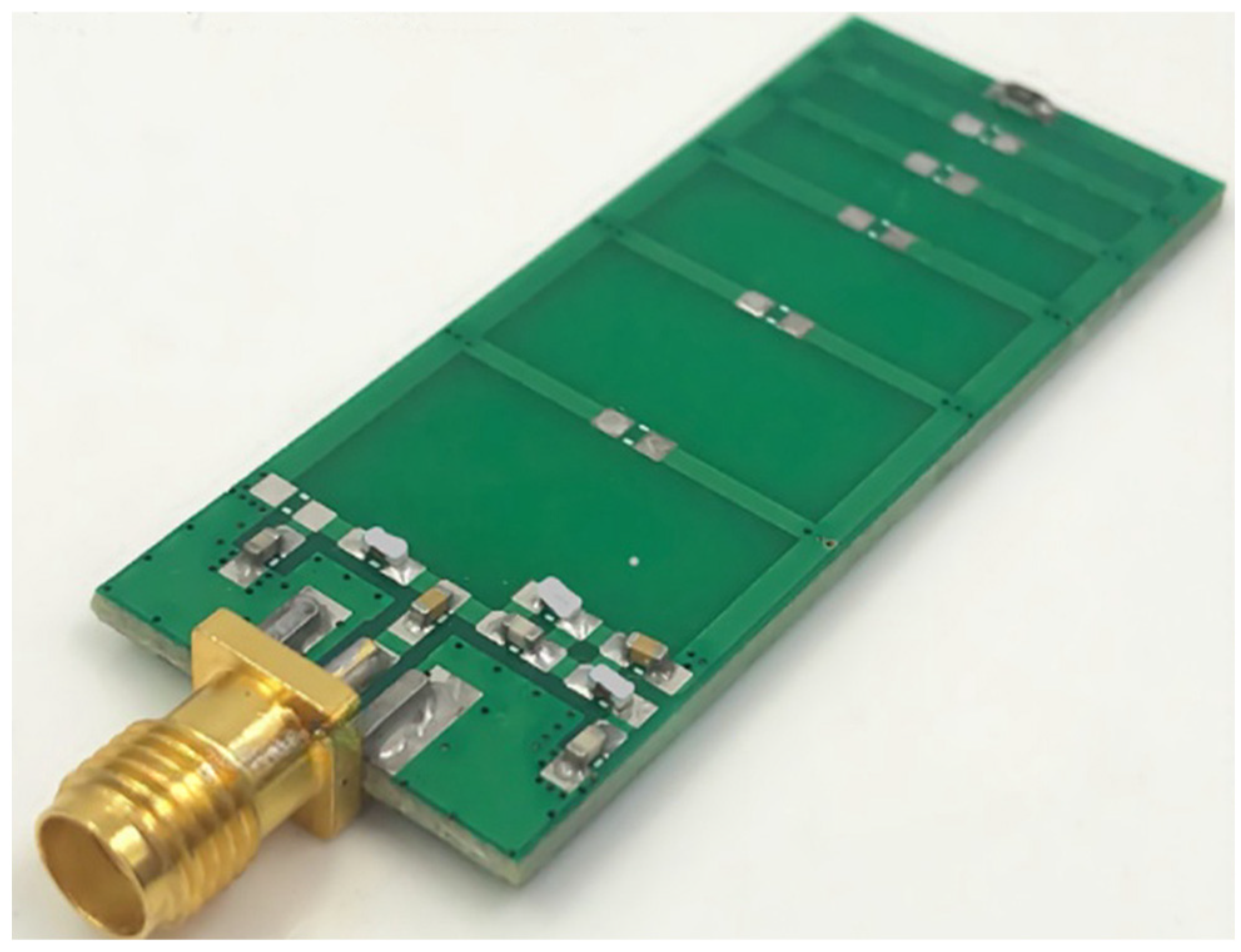

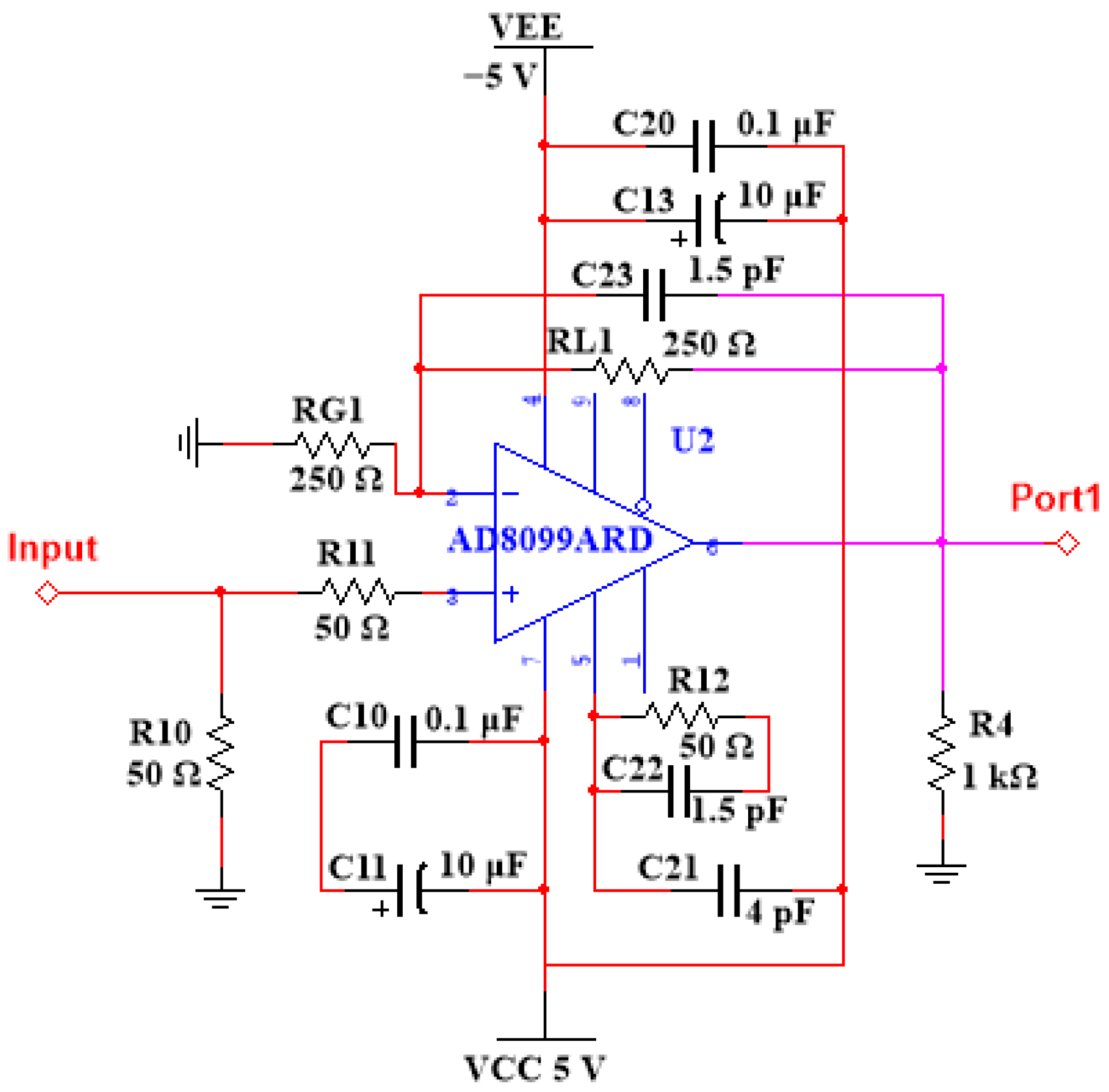

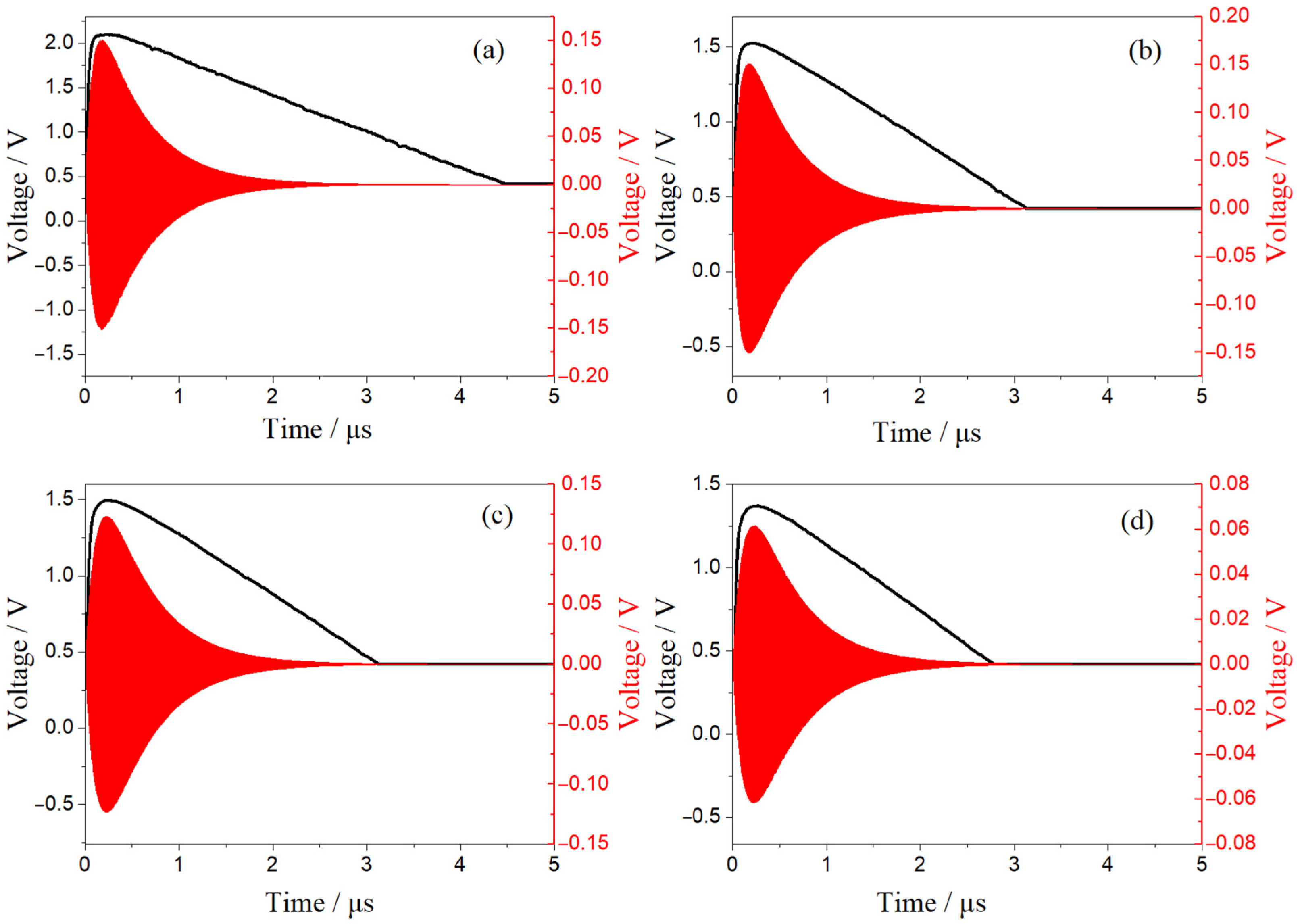
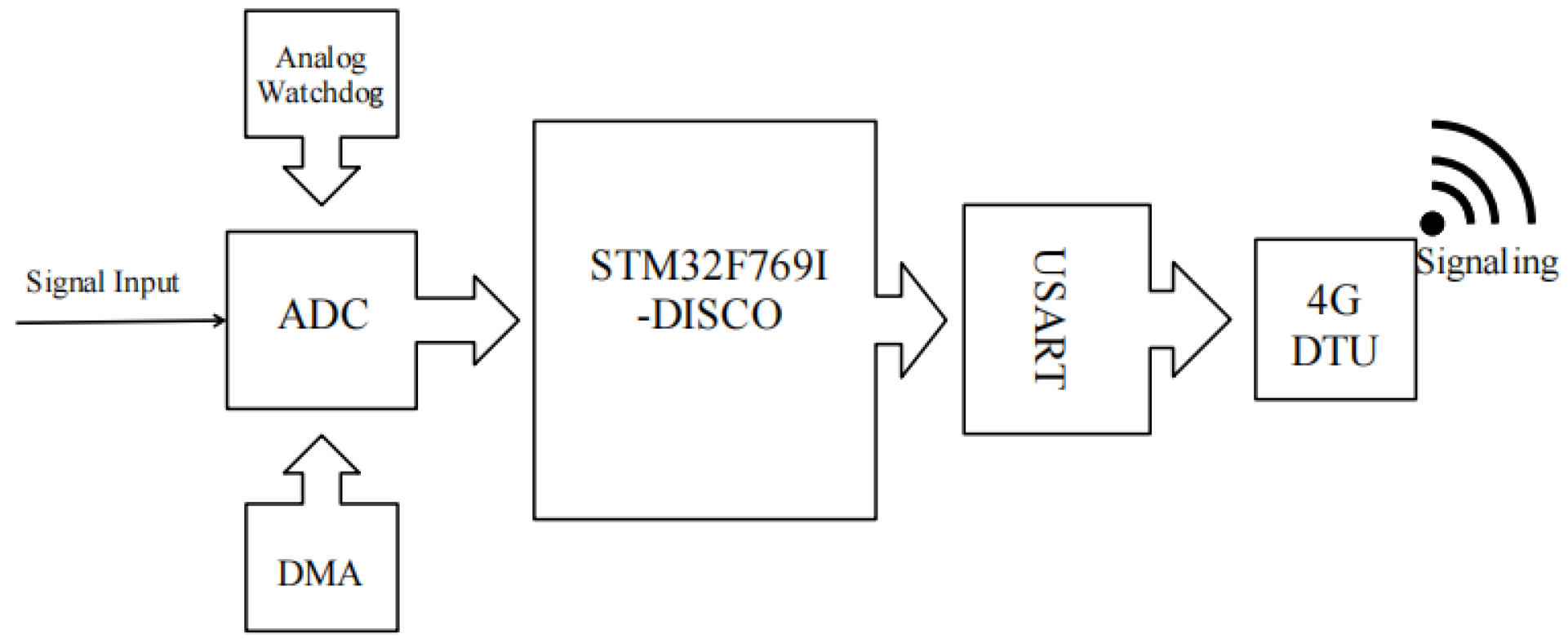
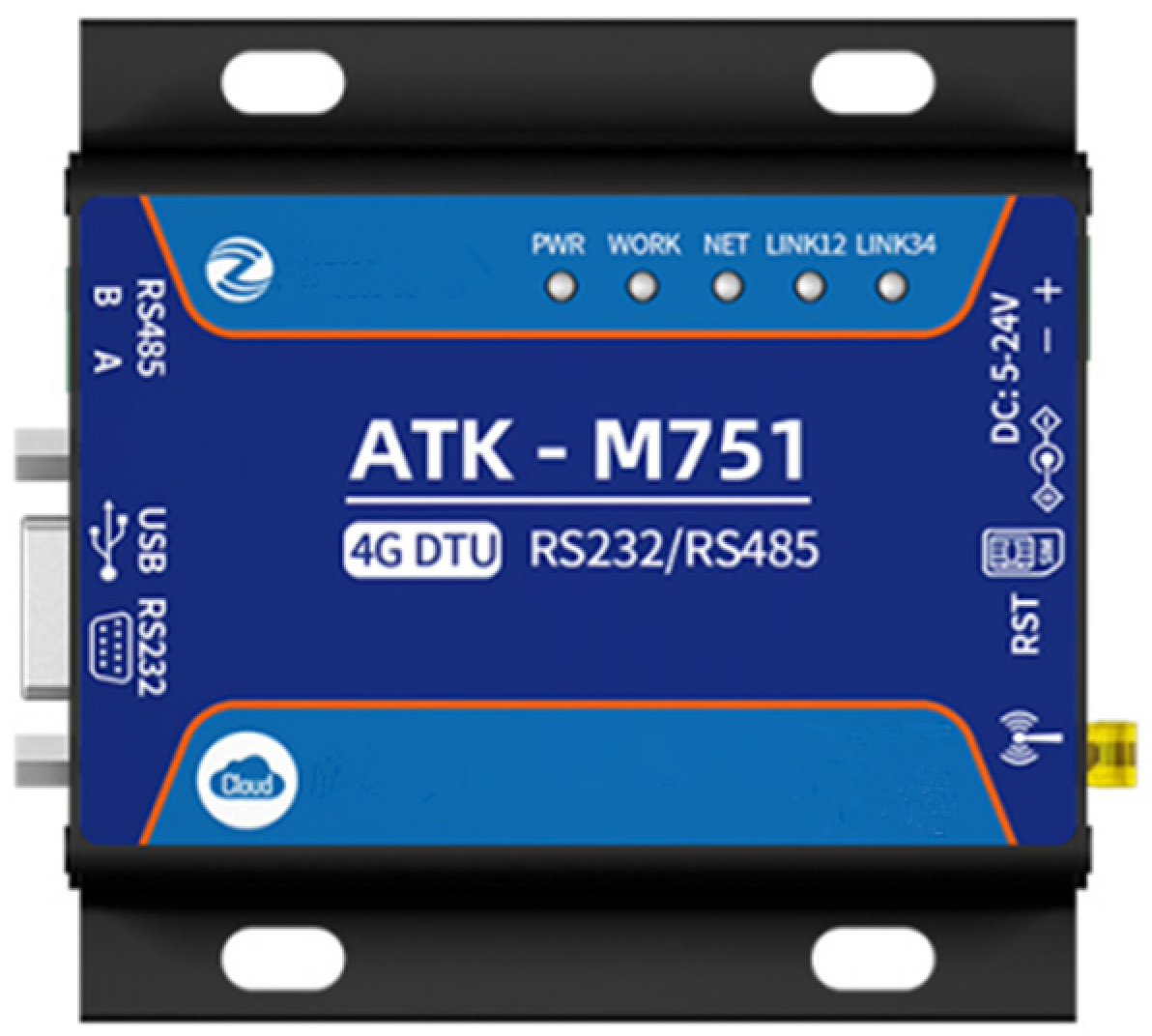


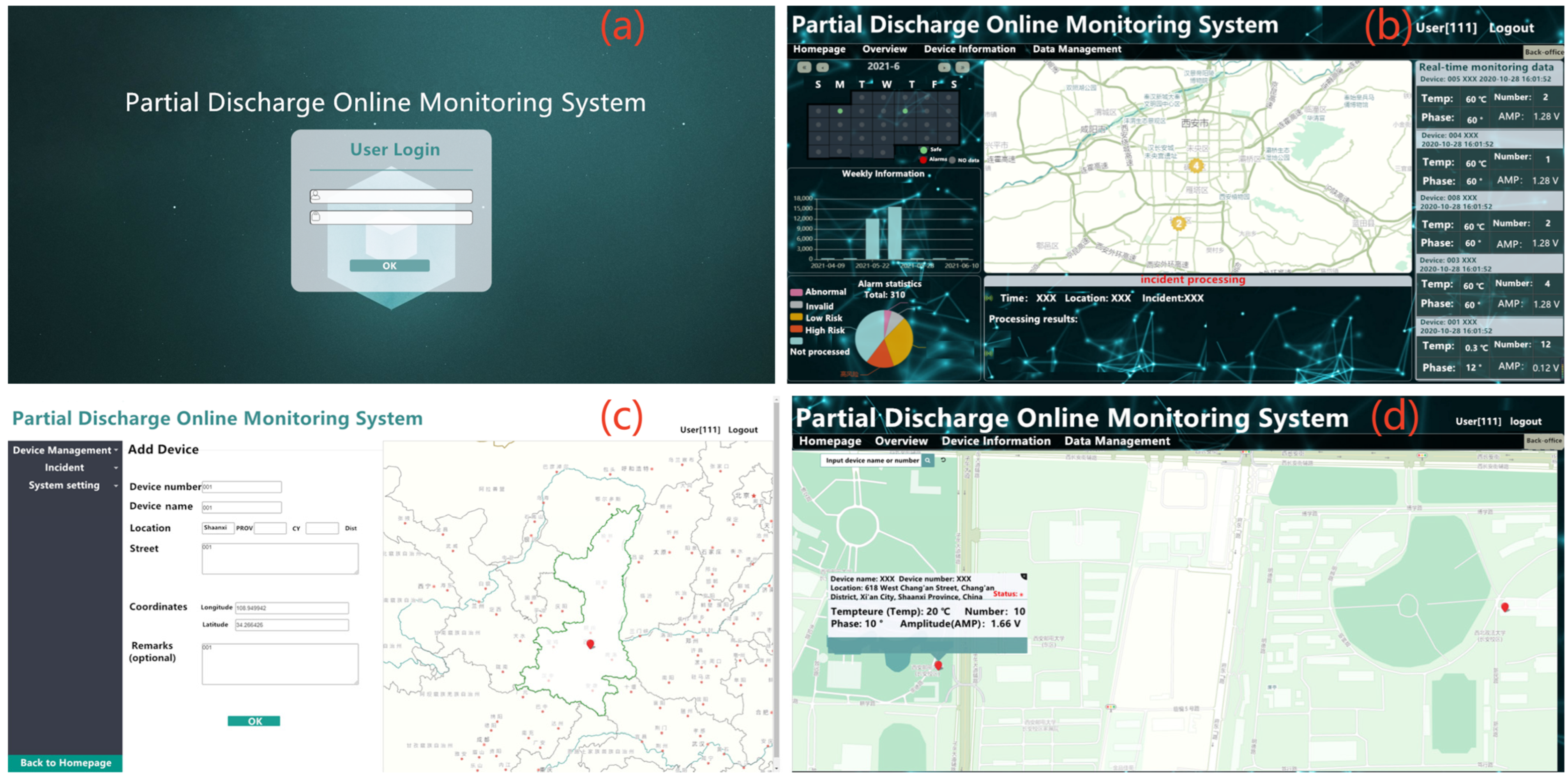




| No. | A (V) | fc (MHz) | τ (ns) | Amplitude (V) | Extend (μs) |
|---|---|---|---|---|---|
| 1 | 1 | 300 | 80 | 2.10 | 4.47 |
| 2 | 1 | 900 | 80 | 1.52 | 3.14 |
| 3 | 1 | 900 | 120 | 1.49 | 3.13 |
| 4 | 0.5 | 900 | 120 | 1.37 | 2.81 |
| Discharge Voltage (V) | Maximum Amplitude of Discharge Waveform (V) |
|---|---|
| 8000 | 0.175 |
| 9000 | 0.214 |
| 10,000 | 0.363 |
| 12,000 | 0.522 |
Disclaimer/Publisher’s Note: The statements, opinions and data contained in all publications are solely those of the individual author(s) and contributor(s) and not of MDPI and/or the editor(s). MDPI and/or the editor(s) disclaim responsibility for any injury to people or property resulting from any ideas, methods, instructions or products referred to in the content. |
© 2023 by the authors. Licensee MDPI, Basel, Switzerland. This article is an open access article distributed under the terms and conditions of the Creative Commons Attribution (CC BY) license (https://creativecommons.org/licenses/by/4.0/).
Share and Cite
Yan, X.; Cheng, C.; Zhang, C.; Bai, L.; Zhang, W. On-Line Partial Discharge Monitoring System for Switchgears Based on the Detection of UHF Signals. Appl. Sci. 2023, 13, 11850. https://doi.org/10.3390/app132111850
Yan X, Cheng C, Zhang C, Bai L, Zhang W. On-Line Partial Discharge Monitoring System for Switchgears Based on the Detection of UHF Signals. Applied Sciences. 2023; 13(21):11850. https://doi.org/10.3390/app132111850
Chicago/Turabian StyleYan, Xuewen, Chen Cheng, Chen Zhang, Lei Bai, and Wenwen Zhang. 2023. "On-Line Partial Discharge Monitoring System for Switchgears Based on the Detection of UHF Signals" Applied Sciences 13, no. 21: 11850. https://doi.org/10.3390/app132111850
APA StyleYan, X., Cheng, C., Zhang, C., Bai, L., & Zhang, W. (2023). On-Line Partial Discharge Monitoring System for Switchgears Based on the Detection of UHF Signals. Applied Sciences, 13(21), 11850. https://doi.org/10.3390/app132111850





